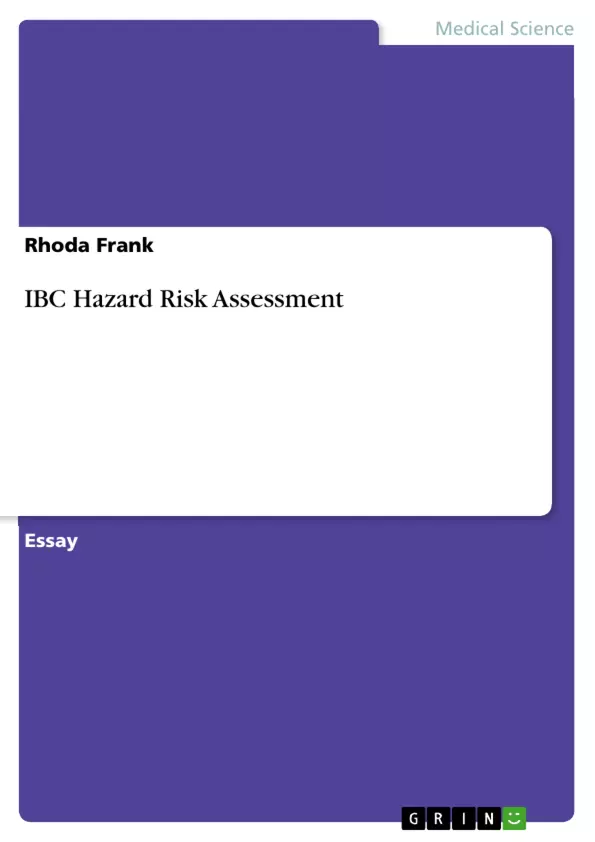The 1918 flu pandemic, also known as the Spanish flu, was one of the most devastating global health crises in modern history. To better understand the hazard risk associated with this historical event, an Integrated Biocultural (IBC) approach was employed to assess its impact. This hazard risk assessment aims to provide a comprehensive analysis of the factors that contributed to the spread and severity of the 1918 flu, including biological, cultural, and environmental dimensions. Using a multidisciplinary framework, this study integrates historical data, epidemiological records, and socio-cultural factors to analyse the various elements that shaped the hazard risk during the 1918 flu pandemic.
By examining the virus's biological characteristics, transmission patterns, and societal responses, we gain insights into the vulnerability and resilience of communities affected by the outbreak. The findings from this hazard risk assessment shed light on the critical factors that influenced the 1918 flu's impact, such as population density, healthcare infrastructure, and social behaviours. Understanding these dimensions can inform contemporary pandemic preparedness and response strategies, helping to mitigate future health crises. The IBC approach provides a holistic perspective on hazard risk assessment, emphasizing the interconnectedness of biological, cultural, and environmental factors in shaping the outcomes of pandemics.
Inhaltsverzeichnis (Table of Contents)
- Description of Agent
- Criteria for Containment
- Pathogenicity
- Transmission
- Stability
- Infectious Dose
- Concentration Used
- Natural Origin of Agent
- Availability of Prior Animal Studies
- Availability of effective prophylaxis or therapeutic interventions
- Medical Surveillance Including Basic Steps Required in the Event of Exposure
- Incident, In the Event of Symptom Development, And for Return to Work After Influenza Illness
- Experience and skill level of personnel
- Recommendation for An Appropriate Biosafety Level
Zielsetzung und Themenschwerpunkte (Objectives and Key Themes)
This document presents a comprehensive hazard risk assessment for the 1918 influenza virus, focusing on the specific context of a biomedical laboratory at Big U. The assessment examines the agent, containment criteria, and necessary biosafety measures, ultimately recommending an appropriate biosafety level for handling the virus.
- Agent Description and Risk Assessment
- Containment Measures for Infectious Agents
- Biosafety Levels and their Application
- Importance of Personnel Expertise and Experience
- Ethical Considerations and Responsible Research Practices
Zusammenfassung der Kapitel (Chapter Summaries)
- Description of Agent: This section details the characteristics of the 1918 influenza virus, including its pathogenicity, transmission mode, and potential for causing serious human disease. The document highlights the virus's classification as RG3, signifying high individual risk, and outlines the laboratory's preparedness measures.
- Criteria for Containment: This section comprehensively outlines the containment criteria for the 1918 influenza virus, covering aspects like pathogenicity, transmission, stability, infectious dose, and concentration used. It emphasizes the need for strict adherence to protocols and guidelines to prevent the spread of the virus.
- Medical Surveillance Including Basic Steps Required in the Event of Exposure: This section emphasizes the importance of comprehensive health and medical surveillance for laboratory personnel. It outlines proactive measures to ensure early detection of lab-acquired infections and provides detailed steps to be taken in the event of exposure.
- Experience and skill level of personnel: This section highlights the significance of having qualified and experienced personnel within the laboratory setting. It underscores the importance of diverse expertise in areas like epidemiology, virology, bacteriology, immunology, and genetics.
- Recommendation for An Appropriate Biosafety Level: This section concludes the assessment by recommending Biosafety Level 3 (BSL-3) as the appropriate level for handling the 1918 influenza virus. The recommendation emphasizes the need for robust operational and safety programs, aligning with World Health Organization guidelines.
Schlüsselwörter (Keywords)
This risk assessment focuses on the 1918 influenza virus, biosafety levels, containment criteria, laboratory safety protocols, pathogenicity, transmission, infectious dose, medical surveillance, personnel expertise, and ethical considerations. The document aims to guide responsible research practices for handling high-risk infectious agents in a biomedical laboratory setting.
- Citation du texte
- Rhoda Frank (Auteur), 2023, IBC Hazard Risk Assessment, Munich, GRIN Verlag, https://www.grin.com/document/1364318



